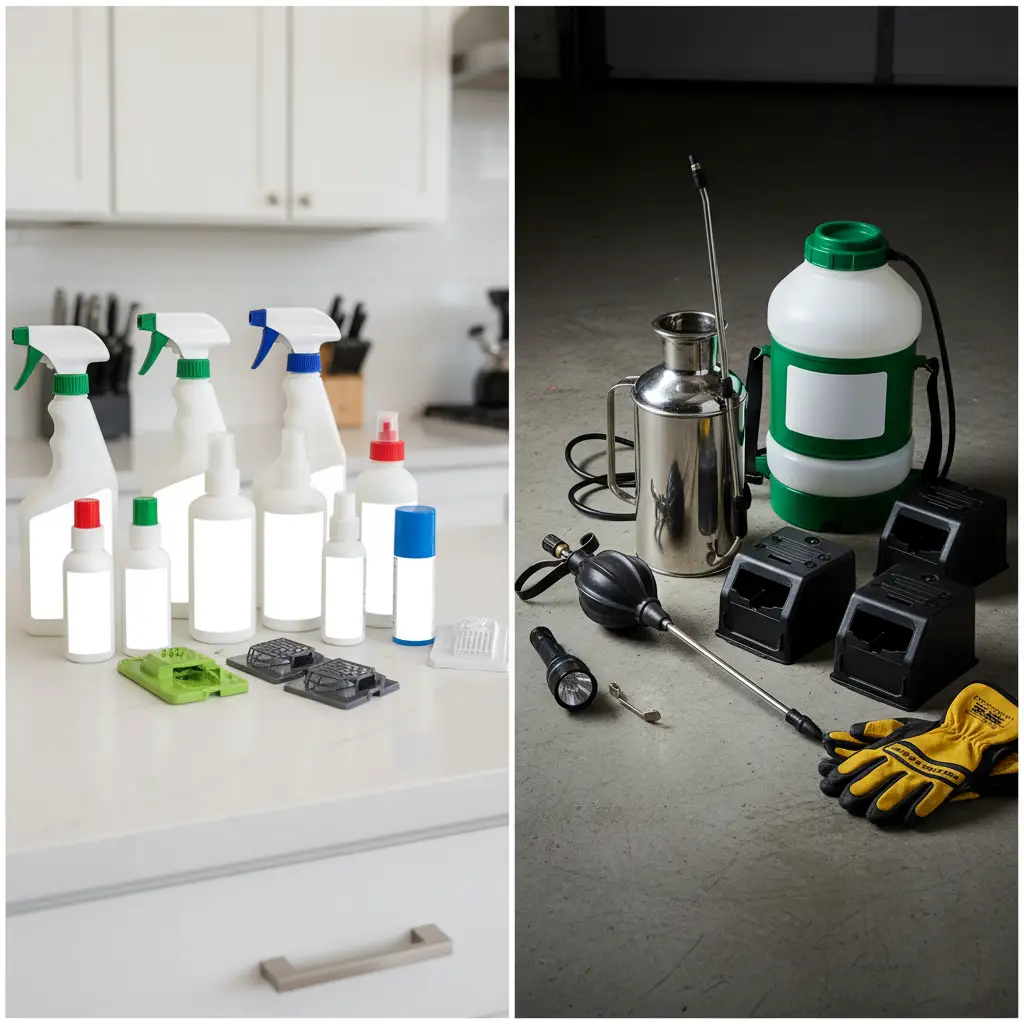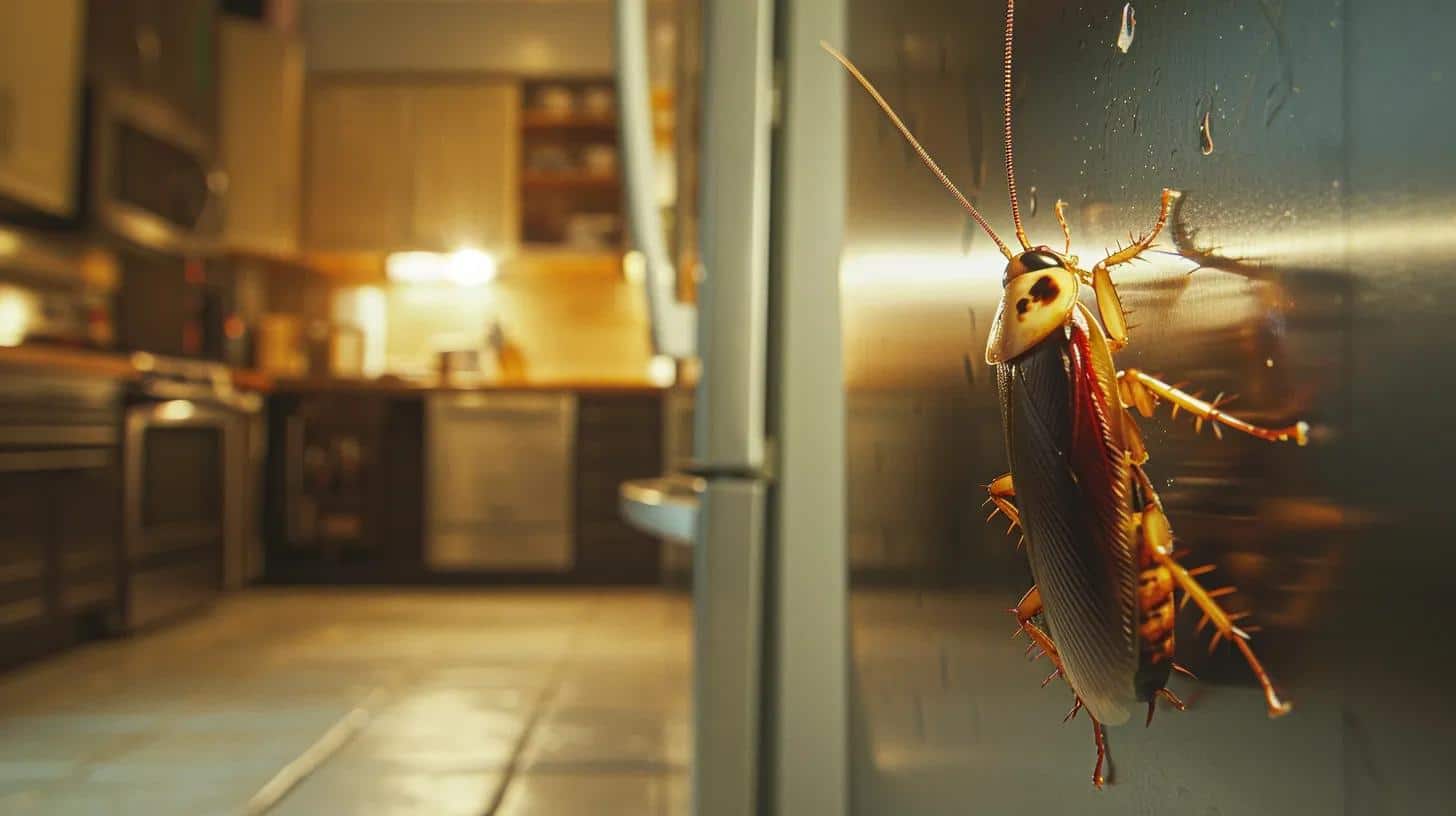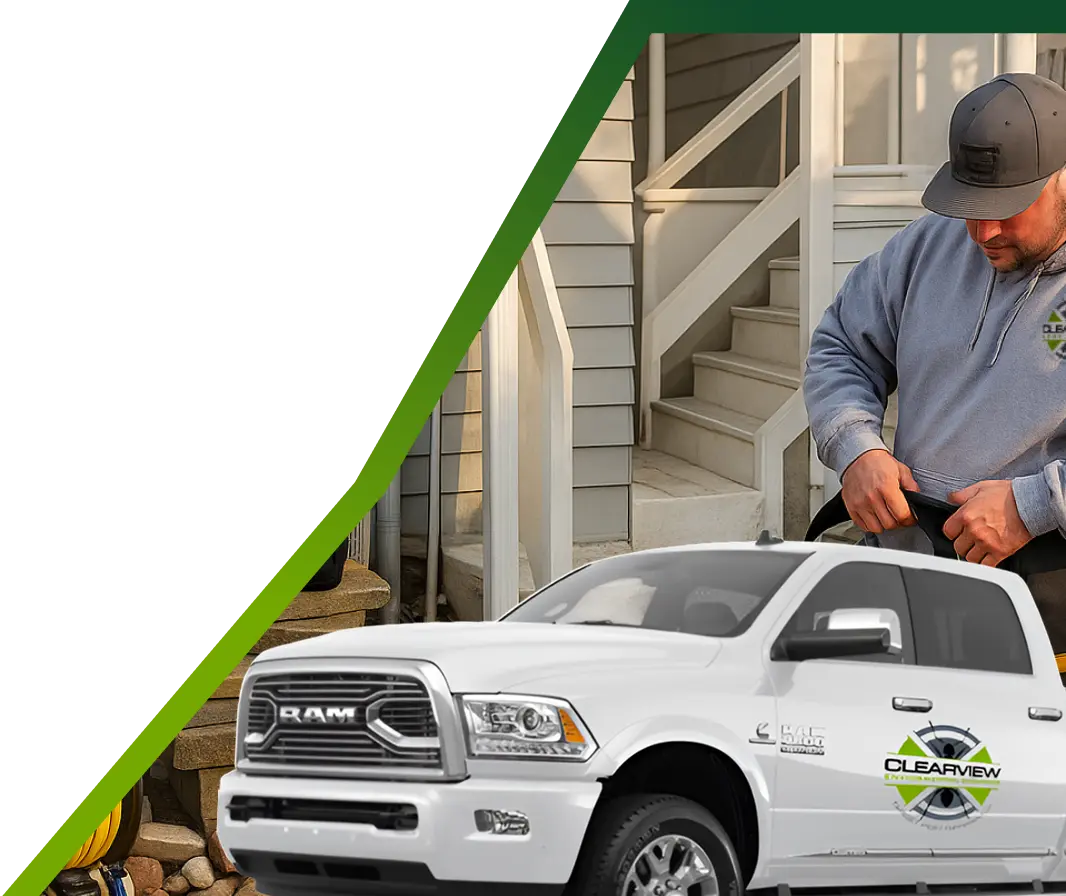
The temptation to grab a spray can from the local hardware store when ants march across your kitchen counter or roaches scurry behind your refrigerator is understandable. DIY pest control products promise quick, affordable solutions that seem perfect for busy New Jersey residents dealing with unwanted visitors in their apartments and townhomes.
However, what appears to be a simple, cost-effective solution often becomes an expensive cycle of repeated treatments, escalating infestations, and eventual professional intervention at significantly higher costs. The unique challenges presented by multi-family housing in New Jersey create conditions where DIY approaches not only fail but can actually make pest problems worse.
Understanding why store-bought pest control products consistently fail in apartments and townhomes—and the hidden dangers they pose—can save New Jersey residents time, money, and frustration while protecting their families from ineffective and potentially harmful chemical exposures.
Consumer pest control products sold in retail stores are designed for broad market appeal and regulatory compliance, not for effective pest elimination in complex multi-family housing environments. These inherent limitations make them poorly suited for the challenges common in New Jersey apartments and townhomes.
Regulatory Restrictions: Store-bought pesticides are heavily regulated for consumer safety, resulting in significantly lower active ingredient concentrations compared to professional-grade products. While this reduces immediate toxicity risks, it also dramatically reduces effectiveness against established pest populations.
Resistance Development: Many common household pests in New Jersey have developed resistance to the active ingredients found in consumer products. Years of exposure to these same chemical compounds have created pest populations that can survive treatments that would have been effective decades ago.
Inadequate Penetration: Consumer sprays often fail to reach pest harborage areas where colonies actually live and reproduce. Surface treatments may kill a few visible insects but leave the source population untouched and ready to quickly replenish visible numbers.
Short Residual Activity: Most consumer pest control products provide only temporary effectiveness, breaking down within days or weeks. This short duration means repeated applications are necessary, increasing both chemical exposure and cumulative costs.
Environmental Degradation: Consumer formulations are designed for stability on store shelves, not for environmental persistence. Factors like humidity, temperature fluctuations, and UV exposure quickly degrade these products, leaving gaps in protection.
Limited Delivery Methods: Aerosol sprays and basic liquid applications cannot reach the cracks, crevices, and void spaces where pests actually live and breed. Professional application methods and specialized formulations are required to achieve meaningful penetration.
New Jersey’s apartments and townhomes present unique structural and environmental challenges that make DIY pest control particularly ineffective. Understanding these factors explains why consumer products consistently fail in multi-unit residential settings.
Connected Spaces: Apartments and townhomes share wall voids, plumbing chases, electrical systems, and HVAC ductwork that create highways for pest movement between units. Treating one apartment while neighboring units remain untreated simply pushes pests into adjacent areas temporarily.
Incomplete Access: DIY treatments can only address areas accessible to residents, leaving the majority of pest harborage sites in wall voids, utility areas, and structural spaces completely untreated. Professional access and specialized equipment are required to reach these critical areas.
Building-Wide Populations: What appears to be a localized problem in one unit is often part of a building-wide infestation. Consumer treatments cannot address the scale and complexity of multi-unit pest populations that share resources and travel routes throughout entire buildings.
Multiple Entry Points: Multi-family buildings feature numerous entry points that residents cannot identify or access. Foundation cracks, utility penetrations, shared balconies, and structural gaps require professional assessment and treatment to effectively seal.
Varied Construction Ages: New Jersey’s diverse housing stock includes buildings from different eras with varying construction methods and materials. Each building type presents unique challenges that require customized approaches beyond the capabilities of one-size-fits-all consumer products.
Maintenance Challenges: Residents cannot address structural issues like moisture problems, ventilation deficiencies, or building envelope failures that contribute to pest problems. These underlying conditions must be addressed for any treatment program to succeed long-term.
Contrary to their marketing promises, many consumer pest control products can actually exacerbate pest problems in apartments and townhomes through several counterproductive mechanisms.
Repellent Properties: Many consumer sprays contain repellent ingredients that cause pests to flee treated areas without actually killing them. In multi-family housing, this simply moves pests to untreated areas within the same building or adjacent units.
Colony Fragmentation: Certain pest species, particularly ant control targets like pharaoh ants, respond to incomplete treatments by fragmenting into multiple smaller colonies. This survival strategy actually increases the total number of infestations within the building.
Stress-Induced Reproduction: Some pests accelerate reproduction when exposed to sub-lethal pesticide doses. Incomplete treatments can trigger population booms as surviving insects increase egg-laying and accelerate development cycles.
Evolutionary Pressure: Repeated use of the same active ingredients creates strong evolutionary pressure for resistance development. Surviving pests pass resistance traits to offspring, creating populations increasingly immune to consumer products.
Cross-Resistance: Resistance to one chemical often confers resistance to related compounds, reducing the effectiveness of multiple consumer products simultaneously. Professional rotation of different chemical classes is required to prevent widespread resistance.
Behavioral Adaptation: Pests can develop behavioral resistance, learning to avoid treated areas or changing activity patterns to minimize exposure. These learned behaviors spread through populations and can persist even after chemical resistance dissipates.
Different pest species common in New Jersey apartments and townhomes have evolved specific survival strategies that make consumer products particularly ineffective.

German Cockroach Populations: The most common apartment roach control challenge, German cockroaches reproduce extremely rapidly and have developed resistance to virtually all consumer-available insecticides.
Harborage Complexity: Cockroaches prefer tight spaces within appliances, wall voids, and furniture that consumer sprays cannot adequately penetrate. Professional gel baits and dust formulations are required to reach these critical areas.
Social Structure Impact: Cockroach colonies have complex social structures and communication systems that allow them to quickly adapt to and avoid treated areas, making surface treatments largely ineffective.
Super-Colony Networks: Many ant species in New Jersey apartments form interconnected super-colonies spanning multiple buildings. Treating individual units has no impact on the larger population structure that continues supplying replacement workers.
Trail Communication: Ant trail pheromones guide colony members around treated areas to continue accessing food sources. Consumer treatments rarely disrupt these communication systems effectively enough to achieve colony elimination.
Multiple Queen Systems: Some ant species maintain multiple queens throughout their territory. Killing workers with surface treatments leaves reproductive capability intact, allowing rapid population recovery.
Neophobia Response: Rat and mice control faces the challenge of neophobia—fear of new objects. Consumer bait stations and traps often fail because rodents avoid unfamiliar items in their established territories.
Learning and Memory: Rodents that survive incomplete poisoning attempts develop permanent avoidance behaviors and can teach these behaviors to other colony members, making subsequent treatment efforts more difficult.
Reproduction Compensation: Rodent populations can quickly compensate for losses through increased reproduction rates, often resulting in larger populations within months of DIY treatment attempts.
Store-bought pest control products pose significant health and safety risks that are often inadequately communicated to consumers, particularly in the confined spaces common in apartments and townhomes.
Indoor Air Quality Impact: Consumer aerosol products release volatile chemicals into indoor air that can persist for days or weeks. In apartment settings with limited ventilation, these chemicals can accumulate to concerning levels.
Surface Contamination: Spray treatments leave chemical residues on surfaces where families prepare food, children play, and pets rest. These residues can be absorbed through skin contact or ingested through normal hand-to-mouth activities.
Cumulative Exposure: Repeated applications of consumer products create cumulative chemical exposures that may exceed safe levels, particularly for vulnerable populations including children, pregnant women, and individuals with compromised immune systems.
Inappropriate Use Patterns: Consumer desperation often leads to over-application, mixing of products, or use in inappropriate locations. These misuse patterns can create dangerous chemical concentrations and unexpected toxic reactions.
Label Confusion: Complex labeling requirements and varying instructions across products often result in user confusion and inappropriate application methods that increase both health risks and treatment failures.
Storage and Disposal Issues: Improper storage of partially used products poses ongoing risks to household members, while incorrect disposal can create environmental contamination in dense residential areas.
While consumer pest control products appear cost-effective initially, the true economic analysis reveals that DIY approaches in multi-family housing typically cost significantly more than professional treatment when all factors are considered.
Product Replacement Cycles: Failed DIY treatments require repeated product purchases, often escalating to more expensive “professional strength” consumer products as initial attempts fail.
Time Investment: Researching products, applying treatments, monitoring results, and reapplying requires substantial time investment that many residents don’t calculate into their cost analysis.
Property Damage: Ineffective treatments allow pest problems to escalate, potentially causing damage to personal belongings, food contamination, and even structural damage in cases like termite control situations.
First-Time Effectiveness: Professional treatments typically achieve successful outcomes in initial applications, eliminating the cost cycles associated with repeated DIY attempts.
Warranty Protection: Professional services include warranties and follow-up treatments if problems persist, providing economic protection that consumer products cannot match.
Comprehensive Solutions: Professional treatments address underlying causes and provide prevention recommendations that reduce long-term pest pressure and associated costs.
Understanding how pest infestations spread through apartments and townhomes reveals why isolated DIY treatments in individual units cannot achieve lasting success.
Plumbing and Electrical Chases: Shared utility systems create continuous pathways between units that allow rapid pest movement. Treating one apartment while leaving others untreated simply displaces pests temporarily.
HVAC Distribution: Heating and cooling systems can transport pests throughout buildings, spreading infestations from heavily affected units to previously clean areas.
Wall Void Networks: Shared walls in apartments and townhomes often contain continuous void spaces that pests use as protected travel corridors and nesting areas.
Resource Competition: When pest populations in one unit are stressed by treatment, increased competition drives expansion into adjacent units seeking alternative food and shelter resources.
Reproduction Displacement: Breeding populations relocate to less disturbed areas when their primary territories are treated, often establishing new colonies in neighboring units.
Seasonal Migration Patterns: Pest populations naturally shift locations seasonally, with treatments in some units simply accelerating natural dispersal patterns rather than achieving elimination.
Effective pest control in New Jersey apartments and townhomes requires professional expertise, specialized equipment, and comprehensive approaches that address the unique challenges of multi-family housing.
Building-Wide Evaluation: Professional pest control services begin with comprehensive assessment of entire buildings to identify infestation sources, movement patterns, and structural factors contributing to problems.
Species-Specific Identification: Accurate pest identification allows implementation of targeted treatment strategies that exploit species-specific vulnerabilities rather than using broad-spectrum approaches with limited effectiveness.
Customized Treatment Planning: Professional treatment plans account for building construction, resident cooperation levels, pest species present, and environmental factors that affect treatment success.
Restricted-Use Products: Professional exterminators have access to more effective active ingredients and formulations not available to consumers, providing superior control of resistant pest populations.
Specialized Application Equipment: Professional equipment allows precise application of treatments into wall voids, utility chases, and other inaccessible areas where pests actually live and breed.
Integrated Treatment Approaches: Professional services combine multiple treatment methods including baiting, dusting, liquid applications, and exclusion work to address all aspects of pest problems simultaneously.
Exclusion and Prevention: Professional repairs and exclusions services address structural vulnerabilities that allow pest entry, providing long-term protection that consumer products cannot match.
Ongoing Monitoring: Professional services include follow-up inspections and treatments to ensure complete elimination and prevent re-establishment of pest populations.
Warranty Coverage: Professional treatments include service guarantees that protect residents from treatment failures and provide ongoing support if problems persist.
Successful pest control in multi-family housing requires coordination between residents, building management, and professional service providers that individual DIY efforts cannot achieve.
Simultaneous Treatment Scheduling: Professional services can coordinate treatment of multiple units simultaneously to prevent pest displacement and achieve building-wide elimination.
Access Coordination: Professional exterminators work with building management to access common areas, utility spaces, and adjacent units necessary for comprehensive treatment.
Resident Education Programs: Professional services include resident education about prevention measures and cooperation requirements that enhance treatment effectiveness.
Preventive Maintenance Integration: Professional pest control integrates with building maintenance schedules to address conditions that contribute to pest problems before infestations develop.
Documentation and Reporting: Professional services provide documentation required for property management, insurance claims, and regulatory compliance that DIY approaches cannot match.
Emergency Response Capabilities: Professional services offer rapid response for urgent pest situations that require immediate intervention to prevent building-wide spread.
Multi-family housing pest control involves regulatory requirements and legal considerations that make DIY approaches potentially problematic for both residents and property managers.
Habitability Standards: New Jersey law requires rental properties to be maintained free from pest infestations that affect habitability. DIY failures that allow problems to persist can create legal issues for both tenants and landlords.
Treatment Access Requirements: Effective pest control often requires access to adjacent units and common areas that individual residents cannot legally or practically obtain.
Chemical Application Regulations: Some pesticide applications in multi-family housing require licensed applicators, making certain DIY treatments technically illegal even if products are commercially available.
Property Damage Coverage: Insurance coverage for pest-related damage may require professional treatment documentation to validate claims and coverage eligibility.
Health Impact Liability: Misapplication of consumer products that result in health impacts can create liability issues for both residents and property managers.
Professional Indemnification: Licensed pest control professionals carry insurance coverage that protects property owners and residents from treatment-related liability that DIY approaches cannot provide.
The decision between DIY and professional pest control in New Jersey apartments and townhomes should be based on realistic assessment of the challenges involved and the likelihood of successful outcomes using different approaches.
Multi-Unit Building Infestations: If pest activity is observed in multiple units or common areas, DIY treatments in individual units cannot address the scope of the problem effectively.
Repeat Infestations: When pest problems recur despite previous treatment attempts, professional intervention is necessary to identify and address underlying causes.
Health-Sensitive Populations: Households with children, elderly residents, or individuals with health conditions require professional expertise to ensure treatments are both effective and safe.
Preventive Service Programs: Regular professional maintenance treatments cost significantly less than emergency intervention after infestations become established.
Building-Wide Coordination: Property managers can often negotiate group rates for multi-unit treatments that reduce individual costs while improving effectiveness.
Long-Term Value: Professional treatments that eliminate problems completely provide better long-term value than repeated cycles of failed DIY attempts.

The unique challenges of pest control in New Jersey apartments and townhomes make DIY approaches not just ineffective but potentially counterproductive. The complex structural connectivity, diverse pest species, and regulatory requirements involved in multi-family housing pest management require professional expertise to achieve successful outcomes.
Store-bought pest control products are designed for simple, single-family home applications and lack the power, precision, and persistence necessary to address the complicated pest dynamics found in connected living spaces. The false economy of DIY approaches becomes apparent when considering the costs of repeated failures, property damage, and eventual professional intervention at premium emergency rates.
At Clearview Pest Control, we understand the specific challenges that New Jersey apartment and townhome residents face when dealing with pest problems. Our comprehensive approach addresses not only immediate pest elimination but also the structural and environmental factors that make multi-family housing particularly vulnerable to infestations.
Our experienced team has successfully resolved pest problems in apartment buildings and townhome communities throughout Hudson County, including Jersey City, Hoboken, Bayonne, and surrounding areas. We understand the importance of coordinated treatment approaches that prevent pest displacement while ensuring resident safety and satisfaction.
Whether you’re dealing with current pest problems or seeking preventive protection for your multi-family housing situation, professional expertise provides the effectiveness and reliability that DIY approaches cannot match. Our 24-hour emergency response ensures that urgent pest situations receive immediate attention before they can spread throughout your building.
Don’t let ineffective DIY treatments allow pest problems to escalate beyond manageable levels. Contact Clearview Pest Control at (347) 224-2581 or visit our contact page to schedule a comprehensive assessment and consultation. Professional pest control isn’t just more effective—it’s often more economical when all costs and outcomes are properly considered.
Take control of your pest challenges with solutions that work in New Jersey’s complex multi-family housing environment. Your comfort, health, and financial wellbeing deserve professional expertise that delivers lasting results.
Clearview Pest Control specializes in comprehensive pest management solutions for New Jersey apartments and townhomes, providing effective treatments that address the unique challenges of multi-family housing while ensuring resident safety and satisfaction throughout Hudson County and surrounding areas.
License
Address
182 W 31st St, 2nd Floor, Bayonne, NJ 07002
61 W Palisade Ave #2B, Englewood, NJ 07631
551west 181st. Street Suite#120 New York, NY 10033
